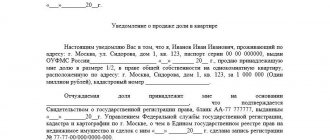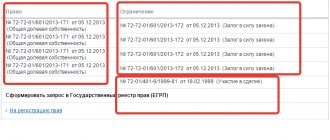Renting an apartment is a rather complicated and sometimes risky process. Risks are associated with the possibility of ending up with unscrupulous employers, but difficulties are often associated with paperwork.
Everyone knows that the main document regulating the relationship between the tenant and the landlord is the residential lease agreement. But besides this document, there are others that are no less important.
Now I would like to understand what an inventory of property is, how to make it correctly and what features you need to know.
Dear readers! Our articles talk about typical ways to resolve legal issues, but each case is unique. If you want to find out how to solve your specific problem, please contact the online consultant form on the right. It's fast and free! Or call us at :
+7 Moscow, Moscow region
+7 St. Petersburg, Leningrad region
8 Federal number (free call for all regions of Russia)!
How to correctly draw up an inventory of property when renting out an apartment
First of all, it should be said that the inventory of property is a full-fledged document that is attached to the main lease agreement.
Such a document is drawn up in simple written form. The author of this paper is always the owner (owner) of the apartment being rented. It describes in as much detail as possible all the property that is on the living space and is rented along with the apartment. In turn, the tenant has the right to correct this document or make his own changes.
The size of the document is unlimited, which means that you can describe everything in any way you like. In general, the size of the list directly depends on how much furniture, appliances, and various appliances are in the apartment.
If we are talking about an empty apartment without furniture, you can describe the presence of a bathroom, counters, and repairs. If the apartment is fully furnished, you can describe each stool and cabinet. Most often, small and cheap things are not included in the description so that the document does not take up several pages.
Property inventory form when renting an apartment.
The inventory of property is often divided into the following categories:
- Furniture. It is advisable to indicate color, size, quantity, condition and other characteristics;
- Technique. When listing equipment, it is best to write the full name, manufacturer, and serial number;
- Plumbing. All plumbing equipment and its condition are described. If the plumbing fixtures are expensive, you can indicate the brand, serial number, etc.;
- Small items. This may include dishes, kitchen utensils, vases, mirrors, etc.
The act of acceptance and transfer of property under an apartment rental agreement.
Read how to rent out an apartment here.
How to draw up a daily rental agreement for an apartment, read the link:
In addition, the inventory can include the presence of meters, their exact readings, and also confirm the presence of seals. But this is not necessary if this was specified in the lease agreement.
The property owner also has the right to restrict the tenant's ability to use certain items of value. Most often, these are things that are difficult to move, so the apartment is rented along with them. An example of such a thing would be an old piano.
Now let's talk about the design of the inventory. After everything has been described, the owner must present the document to the tenant. He, in turn, must read the text and make corrections. For example, the items described may be missing or broken, old, and so on. All changes are made to the document.
After all points have been settled, the parties must put their signatures. After signing, the owner can safely hand over the keys to the tenant.
What cannot be included in the inventory?
The inventory act cannot include property that is personal and belongs to one of the spouses.
This list includes material assets obtained in the following ways:
- something that was given as a gift;
- something that was received by inheritance;
- something that was purchased before the official marriage.
In this case, only one of the spouses should be the recipient of the inheritance or gift, and not both. Otherwise, the subject of the dispute is also subject to division in half.
In private cases, the court separately considers the change in status from “personal” to “common” when the second spouse has invested in increasing the value of the second spouse’s property, and this fact has been proven in court. Also, the property of children is not subject to inventory. At the same time, their age does not matter: they may even be minors.
According to the provisions of the Insurance Code, children's property belongs to the children and cannot be the subject of a dispute between their parents. After the end of the division, these things will remain with the spouse with whom the children will live.
Inspection of the apartment to draw up an inventory of the property
The inspection of the apartment to draw up an inventory must be carried out as truthfully as possible and fully reflect the real state of affairs.
Many apartment owners tend to exaggerate or add non-existent items. The tenant must check all this, making changes along the way.
Typically, the owner provides an inventory of the property to the tenant and gives the opportunity to check each item. The tenant’s task is to check the presence of all items, find out their functionality, identify defects, defects, and so on.
Advice! Most often, if the owner writes down everything down to the smallest detail, then at the end of the lease, he will check everything as carefully as possible. In such cases, the inventory should include the presence of all stains, scratches, cracks, etc. If the owner makes a basic description, then it doesn’t make much sense to find fault with the little things.
Now let’s take a closer look at how an apartment is inspected:
- Property. The property is described approximately as follows: 1 blue sofa with a broken front leg, three chairs in good condition, yellow wall rug with a dark stain in the lower right corner, two deep scratches on the hallway cabinet door, etc.;
- Appliances. As mentioned earlier, the model, manufacturer, year of manufacture and serial number are described. The condition of the device is also indicated (most often, the condition is either new or used). The functionality must be checked;
- Sockets and switches. Switches are easy to check, but with sockets everything is much more difficult. There are many devices for checking voltage, but you can simply take a charger from your mobile phone. If sockets or switches do not work, this must be included in the inventory;
- Plumbing equipment. It is imperative to check all taps, as well as the drainage system. If there are leaks or damage, everything should be included in the inventory;
- Kitchen. Be sure to check the stove (the operation of each burner and oven), the operation of the hood, dishwasher, and so on. If the owner included kitchen appliances in the inventory, you need to check their presence and condition (perhaps all the cups and plates are broken or chipped);
- Counters and other metering devices. All indications are described and entered into the document.
Sometimes owners include photographs of the apartment with the inventory. In practice, this will not help much, but it will make it easier to prove to the tenant the condition of the property at the time of delivery.
Who composes?
The document can be compiled in one of the convenient ways:
- The owner draws it up independently, after which, together with the tenant, on the day of signing the contract and handing over the keys, he double-checks the data specified in the inventory with the actual state of things and their quantity.
- The owner, together with the tenant, checks all valuables in the apartment and records them in the document. The tenant also has the right to include items in the apartment in the inventory if they were not listed by the landlord.
If a residential rental agreement (a sample with an application can be downloaded below) is concluded with the participation of an agent, then he can also participate in drawing up the application.
Certificate of acceptance and transfer of property under an apartment rental agreement
The property acceptance and transfer certificate is also an additional document and is attached to the main lease agreement. Like the inventory of property, it has a simple written form and is made in two copies for each party.
The transfer and acceptance certificate contains the following information:
- Information about the parties to the lease agreement. Full passport details are written here, as in the contract itself;
- Description of the subject of the contract. Most often, it is also copied from the main contract;
- The exact date (sometimes time) when the housing transfer process takes place;
- List of all property assets according to the property inventory;
- Signatures of the parties to the agreement.
Sample act of acceptance and transfer of property under an apartment lease agreement.
The transfer and acceptance certificate can include information about any property at the time of transfer, if for some reason it was not included in the inventory.
This can happen, for example, if at the time of drawing up the inventory a device was in working order, but at the time of the actual transfer of property, it broke down or became defective.
It is important to know that after the lease agreement expires, another transfer and acceptance act will be concluded, only this time from the tenant to the owner.
Ideally, these two documents should be identical, and the information in them should completely match. If for any reason any items are missing or broken in the apartment, the tenant must compensate for the damage at the request of the owner.
Number of copies
Two copies are required - one remains with the owner of the premises, the second with the tenant.
If a realtor is involved in the procedure or the document is certified by a notary, then a third copy is made.
Drawing up a list of transferred property with an accurate description of the condition of things is an important step when renting out an apartment. We recommend that you treat it very carefully to avoid unpleasant situations in the future.
If you find an error, please select a piece of text and press Ctrl+Enter.
Damage to property and what to do about it
Most often, disputes between parties to a lease agreement arise due to damage to property. This is a fairly common phenomenon, because things tend to break and become unusable.
First of all, it should be understood that there is wear and tear (depreciation), which means that after long-term use of the property, it is unlikely to have its original appearance.
Therefore, it is important to distinguish between damage and wear and tear of property. Often, certain things may simply stop working or break down due to the fact that their service life has expired and they are too old. This can hardly be called damage, and asking for compensation for it is wrong.
The situation is different when there is actually a fact of damage. For example, when returning property, the owner discovered broken furniture, torn wallpaper, etc. In this case, the parties must agree on compensation.
In cases where the tenant does not want to compensate for the damage caused, the owner has the right to go to court. The case will be won only if the property owner can prove that the property was not broken at the time of transfer. This is precisely why there is an inventory of property and an acceptance certificate signed by the participants.
Why is it needed?
The inventory is drawn up for the lease agreement and is a list of things in it at the time of the conclusion of the transaction. Its presence protects the interests of both tenants and homeowners. For those who rent living space, it will help avoid charges of:
- damage to property,
- theft.
For the landlord, the existence of such a document serves as a guarantee against the occurrence of the above situations.
Its preparation is beneficial to both parties to the transaction!
In case of controversial situations, it is he who will allow you to prove that you are right, including in court.
Property inventory form for renting out an apartment.









